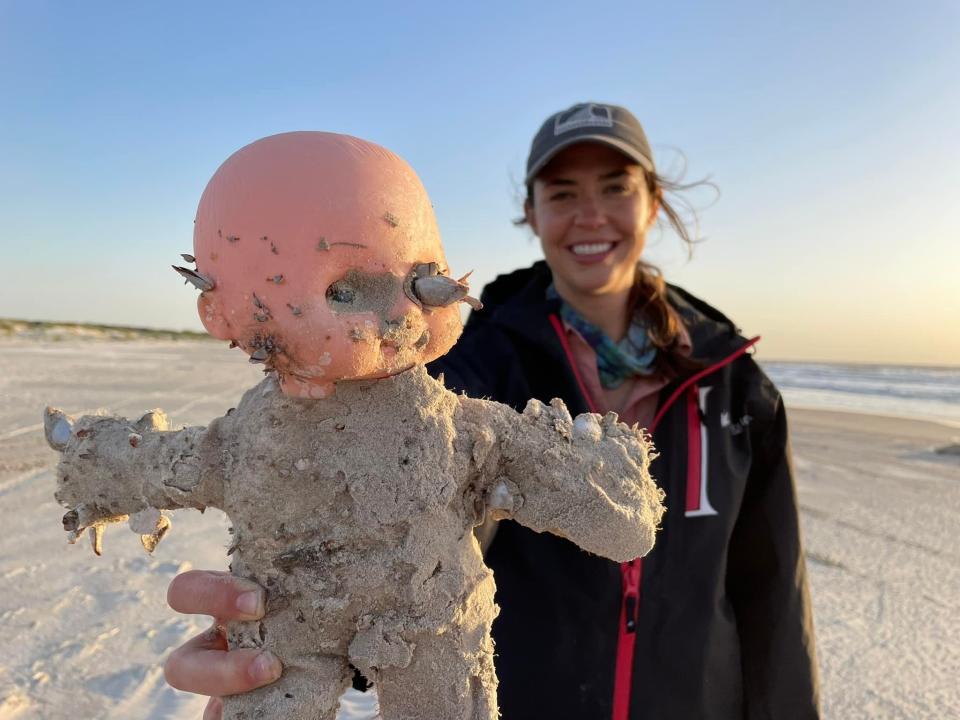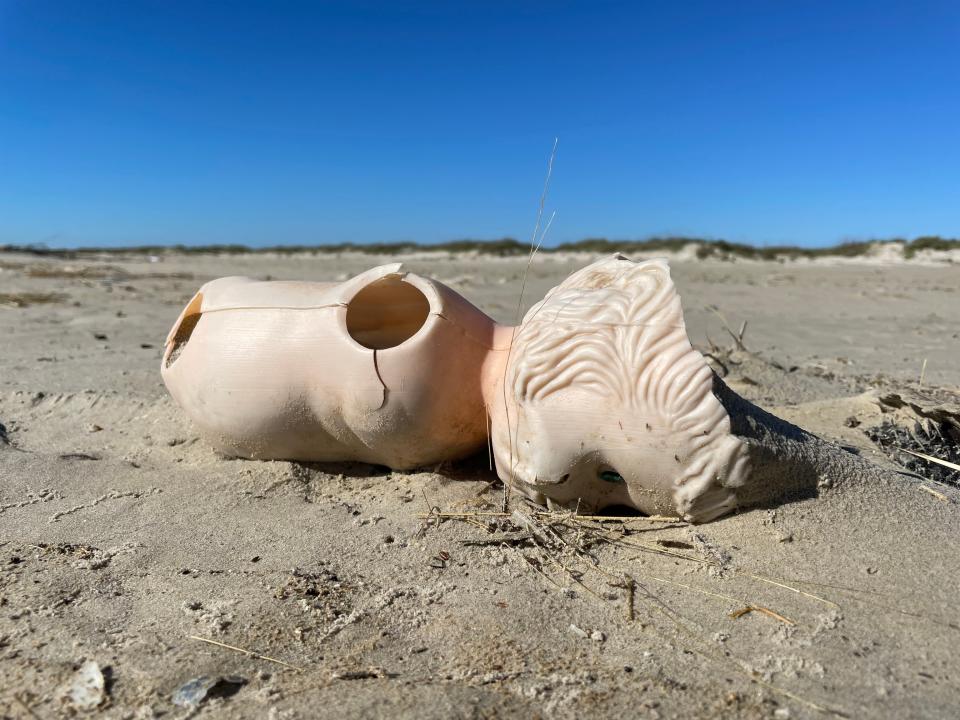Creepy dolls covered in barnacles or missing their limbs keep washing up on Texas beaches
The stuff of nightmares is reality for researchers in Texas who survey the coasts for sea life and have recently found themselves staring down a creepy doll with barnacles for eyes.
Along a 40-mile stretch of beach on Texas' coastal bend, from North Padre Island to Matagorda Island, researchers typically find 10 times the amount of trash they see on other other Gulf of Mexico beaches, Jace Tunnell, director of the Mission-Aransas Reserve at the University of Texas Marine Institute, told the Star-Telegram.
Tunnell said the disproportionate amount of trash is caused by a "loop current" that extends from the Yucatan Peninsula to Florida and pushes debris toward the Texas Gulf.
That stretch of beach has become a valley of creepy dolls.




Tunnell sells the dolls at a yearly fundraising auction and has collected 30 dolls since he began to keep count of them. The institute began to grow an online following after he posted a photo to the Reserve's Facebook page of a sex doll discovered on the beach.
Someone later bought the sex doll's head for $35 and the proceeds were donated to a sea turtle rescue program, Tunnell added.


With the help of Mission-Aransas and Texas Parks and Wildlife Department, valuable data collected will be used to assess restoration efforts in the Gulf in the coming years.
That data will be used by Coastal Bend Bays and Estuaries Program, which received the Gulf Guardian Award for its Egery Flats Restoration Project, the United States Environmental Protection Agency announced April 27.
“The work of protecting and improving the Gulf of Mexico goes far beyond the coast, touching most of the Central U.S. through the Mississippi River basin,” said Regional Administrator Earthea Nance.
“This year’s Gulf Guardian Award winners reflect the diverse ways people can help, and their passion for making a difference. Congratulations to the awardees and for all they do to protect this precious natural resource.”
This article originally appeared on USA TODAY: Creepy, barnacle-covered plastic baby dolls wash up on Texas beaches

